Water Spirits
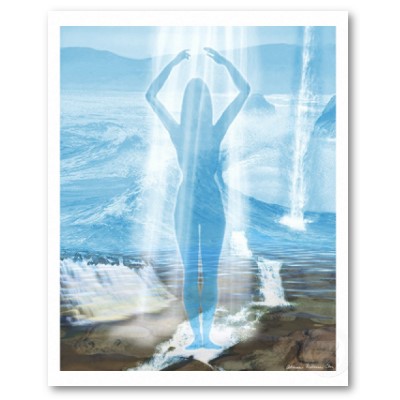 They call her Yemaya, Goddess of the living Ocean, considered the Mother of All. She is most often depicted as a mermaid, or simply a beautiful woman standing amidst the waves. Her name in Yoruban (West Africa), is a contraction of Yey Omo Eja, which means “Mother Whose Children are the Fish”. As all life is thought to have begun in the Sea, all life is held to have begun with Yemaya. She is motherly and strongly protective, and cares deeply for all Her children, comforting them and cleansing them of sorrow. She is said to be able to cure infertility in women, and cowrie shells represent Her wealth.
They call her Yemaya, Goddess of the living Ocean, considered the Mother of All. She is most often depicted as a mermaid, or simply a beautiful woman standing amidst the waves. Her name in Yoruban (West Africa), is a contraction of Yey Omo Eja, which means “Mother Whose Children are the Fish”. As all life is thought to have begun in the Sea, all life is held to have begun with Yemaya. She is motherly and strongly protective, and cares deeply for all Her children, comforting them and cleansing them of sorrow. She is said to be able to cure infertility in women, and cowrie shells represent Her wealth.
In Brazil, she is called Imanje, and offerings of blue and white flowers are cast into the Sea in her name. Imanje’s colors are blue and white, and she is said to wear a dress with seven skirts that represent the seven seas. Sacred to her are peacocks, with their beautiful blue/green iridescence, and ducks.
To the Yoruban people, Yemaya was everything that sustained them, especially with the diaspora which brought them to the New World on the slave ships. To Brazilian fisherman, she brings plentiful fish and safe passage in stormy seas, and holds closely those that perish into her watery depths.
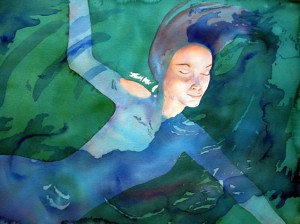
Wherever we live, Yemaya reminds us that even the worst catastrophes can be endured and that, with her help, we can learn to negotiate the ebbs and flows of change in our lives with her wisdom, courage, and grace. Now that we are headed into our yearly migration to the seashores for the upcoming season in the sun, Yemaya is a wonderful symbol to remind us of our deep and lasting connection to the ocean.
As modern humans, we draw sustenance, healing, and beauty benefits from the bounty of the seas, much as our ancestors did. But unlike previous people, if we can’t go to the ocean, luckily, we can bring the ocean to us. The most amazing experience that I can think of, that imparts the soulfulness of Yemaya’s spirit, is the healing water therapy known as Watsu. I had the good fortune some years ago, to receive a Watsu treatment when I was about 6 weeks pregnant with my daughter. I was able to connect to my unborn baby in deeply profound ways through the Watsu session. It has been one of my life’s peak experiences.
What Is Watsu?
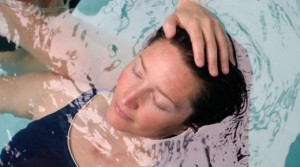 Watsu combines the benefits of both water therapy and shiatsu massage. The therapy, which involves a focus on deep breathing while the recipient’s body is moved weightlessly through warm water by the therapist, is often called “water breath dance”. Developed by Harold Dull in 1980 during his residency at Harbin Hot Springs in Northern California, it can now be found all over the world. It was recently named the “Treatment of the Year” at the Asian Spa Awards.
Watsu combines the benefits of both water therapy and shiatsu massage. The therapy, which involves a focus on deep breathing while the recipient’s body is moved weightlessly through warm water by the therapist, is often called “water breath dance”. Developed by Harold Dull in 1980 during his residency at Harbin Hot Springs in Northern California, it can now be found all over the world. It was recently named the “Treatment of the Year” at the Asian Spa Awards.
Watsu borrows many of its stretching techniques from shiatsu massage, because it focuses on releasing blockages along the body’s energy points, meridians, or chi. In addition, Watsu also borrows techniques from acupressure, a therapy that applies various pressures with the fingertips to restore the free flow of life energy to the body.
Watsu is administered in accordance to the same meridian map that is so vital to Shiatsu massage and acupressure. However Watsu therapy also incorporates gentle stretching in order to loosen and relax the muscles. Watsu sessions are performed in a therapeutic pool (never below 96 degrees Fahrenheit), so that the therapist can gently maneuver their client into the various stretches, without disrupting the relaxing and peaceful setting. The warmth of the water and the gentle stretching and acupressure massage of Watsu will often help clients overcome water traumas – for example, those who are afraid to swim because of a near drowning accident.
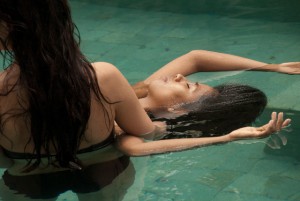 During a Watsu session, the therapist will support the recipient while moving them through a continuous series of gentle stretches. The therapist will typically gently rock the recipient’s body in the cradle position. Cradling is considered the most nurturing pose as it recalls the position that a mother holds her baby. As the therapist rocks the body in this way, muscles are isolated and stretched.
During a Watsu session, the therapist will support the recipient while moving them through a continuous series of gentle stretches. The therapist will typically gently rock the recipient’s body in the cradle position. Cradling is considered the most nurturing pose as it recalls the position that a mother holds her baby. As the therapist rocks the body in this way, muscles are isolated and stretched.
The water allows the therapist to move gracefully through the stretches, and to apply acupressure massage to the upper body, then the lower body, while continually supporting the spine. The body experiences the anti-gravitational characteristic of water – a deeply healing and relaxing state. The warm water encourages the muscles to stay relaxed while improving circulation.
Water Healing
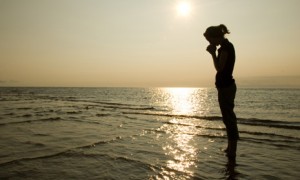
Here’s how the creator of Watsu, Harold Dull describes it: “Think of your most nurturing memory of someone holding, supporting you, just being with you, not trying to do anything to you, holding you so lightly you feel your own lightness as you sink and rise to the rhythm of your breath. Combine all the above and there is still something to add: Watsu’s flow. Watsu interweaves movement and stillness. It has a beginning and an end. And it is endless. Its lesson in letting go into the flow whatever comes up (and a lot does come up) can be carried into your everyday life.”
May the spirit of Yemaya watch over you, and guide you to your own experiences with the ocean this summer, and may they be intensely healing.
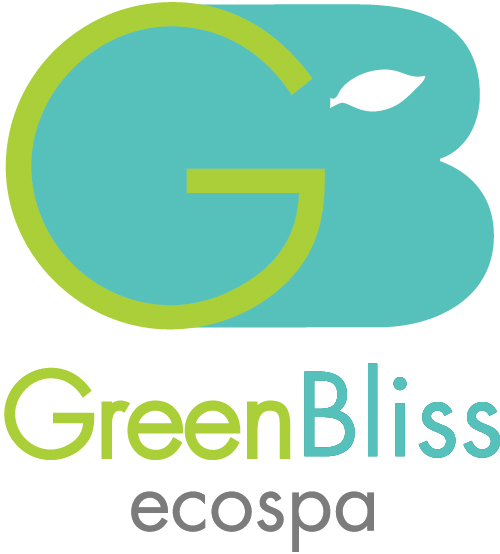
Recent Comments